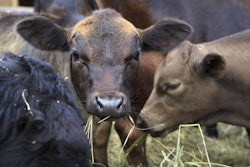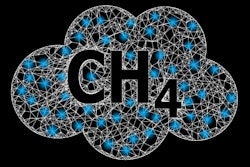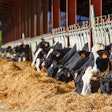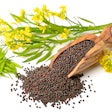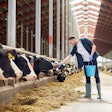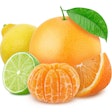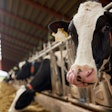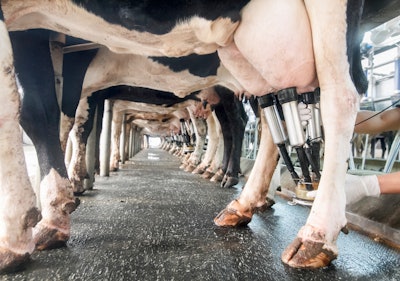
Animals need balanced diets containing all the necessary nutrients that give them the vigor to grow and reproduce, with a strong immunity to fight off infections under unfavorable environmental conditions.
The following is a review of some environmental factors that adversely affect animal performance, namely heat stress, cold stress, disease outbreak and high altitude. Particular reference is made here to dairy cattle and the role of nutrition in mitigating the effects of such stresses on their health and production.
Nutrition and heat stress
Temperate dairy cows are particularly susceptible to heat stress, and often show marked decreases in productivity in hot climates or when introduced into tropical or sub-tropical regions for genetic improvement of local breeds.
The following are feeding strategies that help adapt to hot climates:
Protein nutrition
A study was conducted to examine the effect of protein supplementation on Holstein cows during natural heat stress. Dry matter intake was 11% greater with the high-protein diet, and the fat-corrected milk (FCM) was 4.3% higher. Excess protein should, however, be avoided as it reduces energy utilization due to the extra amount of energy needed for the disposal of surplus protein via the urea cycle.
Fat nutrition
Added fat is important in combating heat stress in hot climates and should be at the maximum amount that can reasonably be fed, i.e. 3% to 8% of the total diet. This reduces the heat increment associated with alimentary tract fermentation and tissue metabolism which in turn reduces total body heat load. Whole cottonseed, soybean oil, or hydrogenated vegetable fat are highly valuable feed ingredients used to minimize heat load and stimulate both milk yield and milk fat percentage.
Mineral supplements
Supplementation of minerals during heat stress is a recommended practice, particularly with high-producing dairy cows. Of greatest importance is potassium (K) because more K is required to counteract losses through milk and sweat. Urinary losses of sodium (Na) also increase during heat stress, due to decreased levels of blood aldosterone. Such losses should, therefore, be balanced out through dietary supplementation.
Use of chilled water
It was found that lactating cows drinking water chilled to 10C had lower respiration rates (70 vs. 81/minute), lower rectal temperatures (39 vs. 40C), and greater milk production (26 vs. 24 kg/d) than cows drinking non-chilled water given at 27C. In cases where the cows have access to fans or sprinklers, the use of chilled water may not be necessary.
Nutrition and cold stress
Cold weather is known to increase the susceptibility to pregnancy ketosis, and hypomagnesemia in ruminants due to changes in endocrine and metabolic functions. It was also found that the maintenance energy requirement of cattle increases by 0.91% for each degree below a temperature of 20C, thereby reducing the efficiency of energy utilization for growth, lactation and other biological functions.
The following are useful tips for alleviating the effects of cold stress via feeding strategies:
- Cows in the last trimester require additional grain feeding during periods when the effective temperature falls below the lower critical level.
- Providing additional hay and grain. If wet feeds are fed, they should not be frozen.
- Making sure that cows have ample water available at all times. Limiting water will limit feed intake and make it more difficult for cows to meet their energy requirements. Frozen troughs and excessively cold water seriously limit water intake.
- Cold weather may interact with the maturity and composition of feed materials. The formulation of the diet fed to cold-stressed animals should, therefore, be adjusted accordingly.
Nutrition and diseases
Mastitis is perhaps the most important disease that afflicts 15% to 20% of cows worldwide and hence causes severe economic losses. Although several veterinary measures and biosecurity programs have been adopted for the control of mastitis, seldom is the nutrition of animals taken into account as a tool that can be used to help bolster the immune system to fight infection.
Protein should receive the most attention as an immune-stimulatory nutrient. It can influence epithelial health and can impact physical defense barriers of the udder by acting on the integrity of the smooth muscle teat sphincter and improving the quality of the keratin plug. It was also found that cows supplemented with vitamin E at 740 mg/d during the dry period had a 37% lower incidence of mastitis after calving than control cows. The combination of vitamin E and selenium at 0.3 ppm in the total diet decreased the number of quarters that had clinical signs of mastitis by 41%. These findings provide evidence for an interaction between vitamin E and selenium in controlling mastitis.
Mastitis can also be induced by infection with other diseases. Milk fever, for example, has been shown to slow the closure of the teat sphincter thereby making the udder more prone to microbial invasion. Cows with milk fever are 8.1 times more likely to have mastitis event as a result. Mastitis was also associated with ketosis, retained placenta, and hepatic diseases, the cases in which clearance of E. coli from the mammary gland of the cow is retarded. Control of these diseases through nutrition and management strategies should also be given prime consideration, not only for preventing the incidence and severity of mastitis but also for alleviating the production and economic losses associated with such diseases per se.
Nutrition and adaptation to high altitude
Despite their natural adaptation mechanisms, animals at high altitudes, i.e. in mountain areas of 3,000 to 5000 meters above sea level, may encounter several production problems. Examples of these problems include:
- Changes in rumen fermentation (e.g. decreased ammonia nitrogen used for microbial protein synthesis and decreased acetate-to-propionate ratio)
- Reduced fertility of male animals due to the atrophy of testicles and replacement of germinal epithelium with connective tissues
- Decreased milk production of cows at high altitudes (5-6 kg less than the yield at the low altitudes), due to the increased nutrient requirement for maintenance, with a little amount of nutrient left over for milk production.
- With the reduced temperature at high altitude (about -0.6 C for every 100 m), cows will begin to experience hypothermia where metabolic and physiologic processes begin to slow and the heart rate decrease. Cows may then lose consciousness and death is imminent unless strict warming measures are taken.
At high altitudes, the nutritive value of feeds is also reduced, which prompt proper conservation and application of known chemical and physical treatment methods to improve digestibility and utilization. Diets should also be supplemented with antioxidants such as vitamin E. This helps improve performance by alleviating much of the oxidative stress problems occurring at high altitudes, as well as improving feed intake and utilization of nutrients needed for health, body weight gain and survivability.
It is also important to supply adequate amounts of iron at high altitudes where atmospheric pressure is lower and there is less oxygen in each breath. In this case, iron would increase the oxygen-carrying capacity of blood and facilitates its utilization by the cells, and would hence improve performance and adaptation to high altitude. It should be noted though that most conventional cereals and legumes used in feeding contain non-heme iron, which is poorly absorbed and utilized by animals. Therefore, the diet of high-altitude animals should be duly manipulated to contain heme-iron sources such as those from animal origin, with the protein and energy components to be kept at optimal ratios.
References are available upon request.


